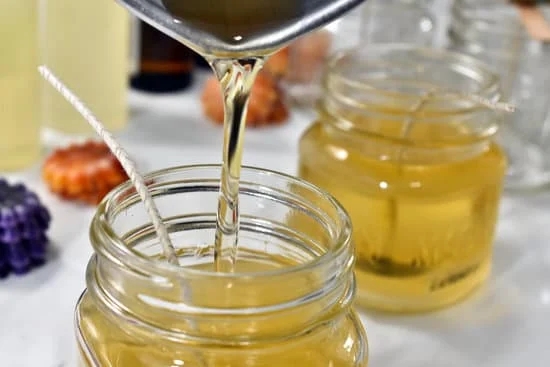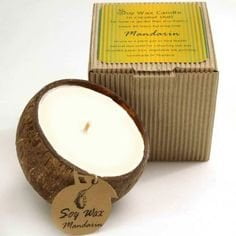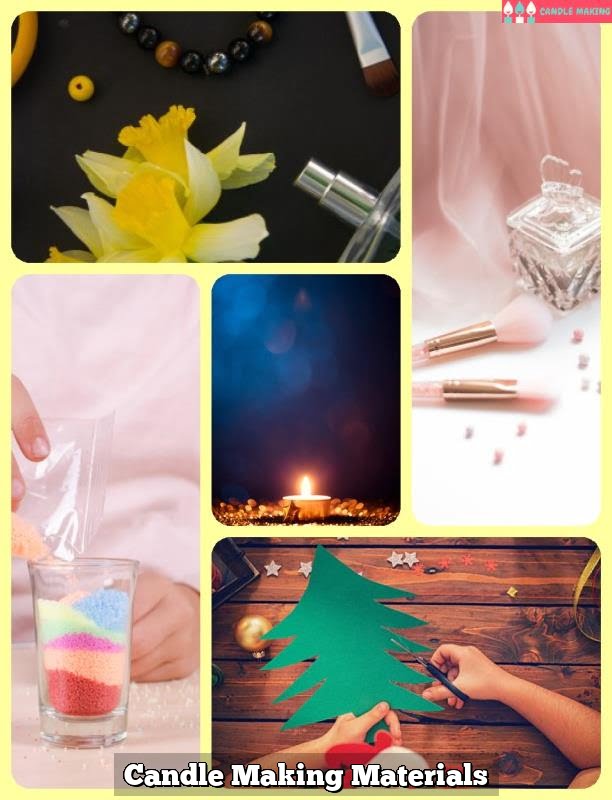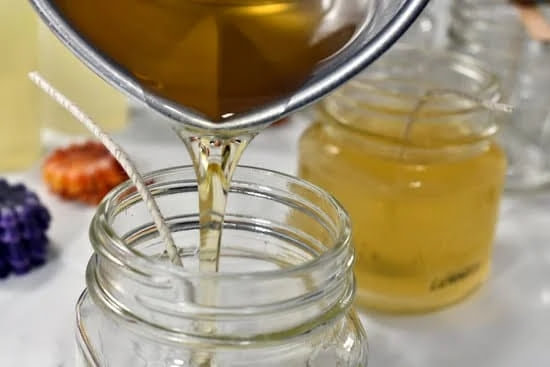Candle making is a cherished craft that allows individuals to express their creativity and create personalized gifts or decorations. One of the key components in this art form is selecting the right raw materials for candle making. Understanding the various ingredients that go into crafting candles is essential for achieving both quality and desired results.
The process of making candles involves a variety of raw materials, with each component playing a crucial role in the final product. From the type of wax used to the selection of fragrances, dyes, and additives, every ingredient contributes to the overall appearance, scent, and burning characteristics of the candle. By carefully choosing these elements, crafters can create unique and captivating candles that suit their preferences or cater to specific occasions.
In this article, we will delve into the world of raw materials for candle making, exploring different types of waxes, essential oils and fragrances for scented candles, dyes and colors for decorative purposes, natural additives for adding texture and uniqueness to creations, as well as essential tools like wicks, molds, and containers.
Whether you are a seasoned candle maker looking to experiment with new ingredients or a beginner eager to learn about sourcing high-quality raw materials – this comprehensive guide will provide valuable insights and tips to help you on your candle-making journey.
The Importance of Quality Raw Materials in Candle Making
When it comes to candle making, the importance of using high-quality raw materials cannot be overstated. The key elements that go into creating a beautiful and functional candle include wax, fragrance oils, dyes, and additives. Each of these components plays a crucial role in determining the overall quality and outcome of the finished product.
Ensuring Safety and Performance
One of the primary reasons why quality raw materials are essential in candle making is safety. Low-quality ingredients can produce candles that burn unevenly, emit excessive soot, or even pose a fire hazard.
By using top-notch raw materials, you can ensure that your candles burn cleanly and safely, providing an enjoyable experience for both yourself and those who use them. Additionally, high-quality materials can help enhance the performance of your candles, such as ensuring longer burn times and better scent throw.
Creating Beautiful Aesthetics
Quality raw materials are also crucial in creating visually appealing candles. The type of wax you use will determine factors such as the candle’s appearance, texture, and ability to retain fragrance. Choosing premium fragrance oils and dyes can result in vibrant colors and long-lasting scents that make your candles stand out. By investing in top-quality ingredients for your candles, you can create products that not only work well but also look stunning.
Promoting Sustainability
Another benefit of using high-quality raw materials for candle making is promoting sustainability. Opting for natural waxes, eco-friendly additives, and cruelty-free fragrances can help minimize the environmental impact of your candle crafting process. By sourcing sustainable raw materials for candle making, you can create products that resonate with environmentally conscious consumers while supporting ethical practices within the industry.
Types of Wax Used in Candle Making
When it comes to candle making, one of the most crucial raw materials is wax. The type of wax you choose for your candles can greatly impact the quality and performance of the final product. There are several types of wax commonly used in candle making, each with its own unique characteristics. Here are some popular options:
- Paraffin Wax: Paraffin wax is one of the most commonly used waxes in candle making due to its affordability and accessibility. It is a byproduct of petroleum refining and is known for its excellent fragrance throw.
- Soy Wax: Soy wax is a natural alternative to paraffin wax, made from soybean oil. It is biodegradable and environmentally friendly, making it a popular choice among eco-conscious candle makers.
- Beeswax: Beeswax is a natural wax produced by honeybees. It has a sweet, subtle scent and a beautiful golden color. Beeswax candles are known for their long burn time and clean flame.
Choosing the right type of wax for your candles will depend on various factors such as cost, desired scent throw, burn time, and personal preference. Some candle makers even blend different types of waxes to achieve specific characteristics in their candles. Experimenting with different waxes can help you find the perfect combination for your unique candle creations.
In addition to these traditional waxes, there are also newer options like coconut wax, palm wax, and rapeseed wax that are gaining popularity in the candle making community. Each type of wax has its own strengths and weaknesses, so it’s essential to do your research and understand how each one performs in terms of fragrance load capacity, burn time, and appearance.
Ultimately, selecting the right wax is a crucial step in creating high-quality candles that meet your standards as a candle maker using raw materials for candle making.
Essential Oils and Fragrances for Scented Candles
Creating scented candles is a popular choice among candle makers, as the aroma adds an extra dimension to the overall candle experience. The essential oils and fragrances used in scented candles play a crucial role in determining the final scent profile of the candle. When selecting which essential oils or fragrances to use, it is important to consider both personal preference and how well the scent complements the type of wax being used.
Essential oils are natural plant extracts that have therapeutic properties and can provide a wide range of scents for your candles. Fragrance oils, on the other hand, are synthetic oils specifically formulated for candle making, offering a vast selection of unique scents that may not be available in nature. Both types of oils can be used alone or blended together to create custom fragrance combinations that cater to different preferences.
It is essential to ensure that the essential oils or fragrance oils you choose are high-quality and suitable for use in candles. Poor-quality oils can affect the burn quality of your candle and may produce undesirable smells when lit. Additionally, some low-quality fragrance oils may contain additives or chemicals that could be harmful when burned. Therefore, investing in premium-grade essential oils and fragrance oils is crucial for creating top-notch scented candles.
| Types of Oils | Characteristics |
|---|---|
| Essential Oils | Natural plant extracts with therapeutic properties; wide range of scents |
| Fragrance Oils | Synthetic oils formulated for candle making; offer unique scents not found in nature |
Dyes and Colors for Decorative Candles
When it comes to creating decorative candles, selecting the right dyes and colors is essential to achieve the desired aesthetic appeal. Dyes are used to add color to the candle wax, while colors may be incorporated in various ways such as through layers, swirls, or marbling effects. These elements not only enhance the visual appeal of the candles but also play a crucial role in expressing creativity and personal style.
There are different types of dyes available for coloring candles, including liquid dyes, dye chips, and powder dyes. Liquid dyes are easy to use and offer vibrant hues, while dye chips are convenient for measuring and controlling color intensity.
Powder dyes provide rich and deep shades but require thorough mixing to avoid clumping. It is important to choose dyes that are specifically formulated for candle making to ensure they blend well with the wax and do not affect the burning performance of the candle.
Incorporating colors creatively can elevate the overall design of decorative candles. Whether creating gradient effects using different shades within a single candle or experimenting with unique color combinations, there are endless possibilities to explore. By understanding how different colors interact with one another and how they influence mood and ambiance, candle makers can craft visually stunning creations that appeal to a wide range of preferences.
| Types of Dyes | Advantages |
|---|---|
| Liquid Dyes | Easy to use; vibrant hues |
| Dye Chips | Convenient for measuring; control color intensity |
| Powder Dyes | Rich and deep shades; requires thorough mixing |
Natural Additives for Unique Candle Creations
When it comes to creating unique and personalized candles, natural additives can play a crucial role in enhancing the overall aesthetics and appeal of your final product. By incorporating these elements into your candle making process, you can achieve a one-of-a-kind look and feel that sets your creations apart from store-bought candles. From botanicals to dried flowers, the possibilities are endless when it comes to adding natural touches to your candles.
To inspire you on your candle making journey, here are some popular natural additives that you can consider incorporating into your next batch of candles:
- Dried herbs and botanicals: Whether it’s lavender buds for a calming effect or rose petals for a romantic touch, dried herbs and botanicals can add both texture and fragrance to your candles.
- Citrus peels: For a refreshing and invigorating scent, consider adding dried citrus peels such as orange or lemon to your candle wax. Not only do they provide a burst of fragrance, but they also add visual interest to your candles.
- Spices and coffee grounds: Create warm and cozy scented candles by mixing in spices like cinnamon or cloves. For an added touch of sophistication, consider incorporating coffee grounds for a rich aroma that is perfect for coffee lovers.
By experimenting with different natural additives in your candle making process, you can discover new ways to express your creativity and create truly unique candles that reflect your personal style. Whether you’re looking to create relaxation-inducing candles for self-care nights or festive candles for special occasions, the use of natural additives can elevate the sensory experience of burning a candle.
Choose high-quality raw materials for candle making combined with these natural elements will surely result in stunning and aromatic creations that bring joy to both yourself and others.
Wicks, Molds, and Containers for Candle Making
Wicks, molds, and containers are essential components in the candle making process, playing a crucial role in the overall quality and appearance of the final product. Selecting the right wicks, molds, and containers can greatly impact the performance and aesthetic appeal of your candles.
Selection of Wicks
Choosing the appropriate wick is vital as it determines how well your candle burns. Wicks come in various sizes and materials, such as cotton, wood, or hemp. The size of the wick should correspond to the diameter of the candle you are making to ensure an even burn. Different types of wicks also influence flame size and burning time, so it is important to consider factors like fragrance load and wax type when selecting a wick.
Creative Molds
Molds for candle making come in a wide range of shapes and sizes, allowing you to create unique candles beyond traditional cylindrical shapes. From geometric designs to intricate patterns, molds offer endless possibilities for creativity. Silicone molds are popular for their flexibility and ease of use, while metal molds provide durability for repeated use. Experimenting with different mold types can result in beautifully crafted candles that stand out.
Functional Containers
Containers play both a practical and decorative role in candle making. Glass jars are commonly used for container candles as they allow the flame to be visible while providing a sleek aesthetic. Tin or aluminum containers are ideal for travel candles due to their portability and durability. When choosing containers, consider factors like heat resistance, compatibility with your chosen wax type, and overall visual appeal that aligns with your brand or style.
By carefully selecting high-quality wicks, molds, and containers that suit your specific needs and preferences, you can enhance the overall experience of candle making while creating stunning products that bring joy to yourself or others.
Whether you are a beginner or experienced crafter, investing in premium wicks, durable molds, and stylish containers can elevate your candle making projects to new heights.
Where to Source High-Quality Raw Materials for Candle Making
When it comes to creating high-quality candles, sourcing the right raw materials is essential. Whether you are a seasoned candle maker or just starting out, finding reliable suppliers for your raw materials is key to producing beautiful and long-lasting candles. There are a variety of options available when it comes to sourcing raw materials for candle making, including both online and brick-and-mortar stores.
One option for finding high-quality raw materials for candle making is through specialty stores that cater specifically to crafters and hobbyists. These stores often carry a wide range of waxes, fragrances, dyes, and other additives specifically designed for candle making. Visiting these stores in person can also allow you to see and feel the products before making a purchase, ensuring that you are getting exactly what you need for your candles.
Another convenient option for sourcing raw materials for candle making is through online retailers. Many online suppliers offer a vast selection of raw materials at competitive prices, making it easy to compare different options and find the best deals.
Additionally, purchasing raw materials online allows you to access a wider variety of products that may not be available locally, giving you more options for creating unique and personalized candles. By carefully researching online suppliers and reading reviews from other customers, you can ensure that you are getting high-quality raw materials for your candle making projects.
For those looking to support small businesses or local artisans, attending craft fairs or markets can be a great way to find unique and high-quality raw materials for candle making. Many independent sellers offer handmade waxes, fragrances, and other supplies that can add a special touch to your creations.
Not only will purchasing from these vendors help support their businesses, but it can also provide you with one-of-a-kind ingredients that will set your candles apart from mass-produced options. Whether you choose to shop in person or online, finding the right sources for your raw materials is essential for creating beautiful and aromatic candles.
Tips for Beginners in Selecting the Right Raw Materials for Candle Making
As beginners in the art of candle making, selecting the right raw materials is crucial to creating high-quality and long-lasting candles. The key to a successful candle-making venture lies in choosing the best components that will not only enhance the aesthetic appeal of your candles but also ensure their functionality and safety. By understanding the different types of raw materials available and their respective qualities, you can take your candle-making skills to the next level.
When selecting raw materials for candle making, it is essential to consider factors such as the type of wax, fragrances, colors, additives, wicks, molds, and containers. Each component plays a significant role in determining the final outcome of your candles.
For example, the choice of wax will dictate burn time and scent throw, while fragrances and essential oils will add unique aromas that set your candles apart. Colors and dyes contribute to the visual appeal of your creations, while natural additives provide texture and character.
In conclusion, as you embark on your journey into candle making, remember that quality raw materials are the foundation of a successful craft. Whether you choose traditional paraffin wax or opt for more eco-friendly soy wax, invest in high-grade essential oils and fragrances for captivating scents, experiment with vibrant colors and natural additives for creative designs.
With a keen eye for detail and a passion for craftsmanship, you can create stunning candles that not only illuminate spaces but also fill them with delightful aromas and ambiance. So go ahead, explore different raw materials for candle making, unleash your creativity, and watch as your creations come to life through flickering flames.
Frequently Asked Questions
What Are the Raw Materials in Candles?
The raw materials in candles typically include wax, wick, fragrances, and dyes. Wax can be sourced from various substances like paraffin, soy, beeswax, or palm. The type of wax used determines the quality and characteristics of the candle.
What Are the Materials Needed for Candle Making?
To make candles, you will need wax, a wick, a suitable container or mold, fragrance oils for scent (if desired), and dye for color (optional). Tools like a double boiler for melting the wax, thermometer, stirring utensil, and scale for measuring ingredients are also essential.
What Are the Main Ingredients of Candle?
The main ingredients of a candle are wax and a wick. The type of wax used varies depending on preferences – paraffin is commonly used due to its affordability and strong scent throw.
Soy wax is favored by those looking for a natural option while beeswax offers a subtle sweet aroma. Ultimately, the main goal is to create a balanced blend of these ingredients to produce a high-quality candle with even burning properties and desirable scent characteristics.

Welcome to my candle making blog! In this blog, I will be sharing my tips and tricks for making candles. I will also be sharing some of my favorite recipes.





